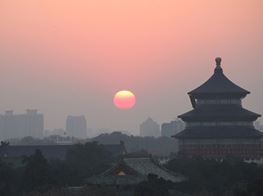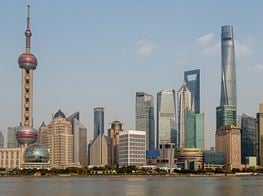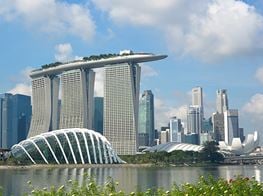Art13: Setting The Precedent For The Global
The VIP opening for ART13 was amazing. That’s what everyone said the next day, with “quality and variety” in a crowd of art lovers who flocked to Olympia Grand Hall in West London. From Simon de Pury, Alia Al Senussi to even Harry Styles, teen heart throb. The music was blaring, Citi Private Bank sponsored VIP services were at the ready: “They say the party ended at 9pm,” someone said, – but it went on after that.”
This is an exciting moment for art fairs, given ART13 is the brainchild of the founders of ART HK – Tim Etchells and Sandy Angus – a fair set to re-launch in May 2013 as part of the Art Basel brand. Indeed, the success of ART HK has taken a somewhat mythical status, becoming Asia’s premier art fair in the space of only a few years after its founding in 2007. And like its previous incarnation, ART13 has hit the ground running, with positive sales reported throughout and a general confidence in the fair’s future.
A lot has been made about ART13 being a global fair, with 128 galleries from 29 countries. Speaking with fair director Stephanie Dieckvoss amidst paintings on show at Michael Goedhuis’s booth, I raised the issue of asserting a global identity in the sense that it might be contrived, or, perhaps, homogenizing, given the art fair’s mission statement to “thoroughly” reflect “global ethos, and the current state of the art market, which has seen a considerable growth of art from previously under-represented territories.” Dieckvoss replied, “For us we have the advantage of being a new fair and saying what galleries we want. In terms of the balance, it is much easier to have more equal representation.” With galleries from India, South Africa, the UAE, Lebanon, Israel, Singapore, China and Hong Kong, Germany, Azerbaijan, amongst others, Dieckvoss noted: “It is important to show a variety and not just one gallery representing an entire territory.”
The result is a heady mix of galleries, art and art people, who most described as “fresh”. Twenty installations presented as part of Art Projects for instance, included three fragments of ancient columns mossed over by Handiwirman Saputra in Tak Berakar Tak Berpucuk no.7 (No Roots, No Shoots no. 7) (2011) and Žilvinas Kempinas’s incredible Fountain (2011), created from rolls of celluloid film bursting out from a working fan to produce a perfect, kinetic pool of film. There was a pairing of ceramic works by Young-Jae Lee and a series of ink drawings by Chen Guangwu, in a collaborative installation exploring classic Asian media titled Ink, Earth Fire, (2011), not to mention the largest project on show: Zhu Jinshi’s 12-metre long installation, Paper Boat, 2012, made from bamboo, cotton and 10,000 sheets of rice paper suspended at the centre of the fair hall.
There was also a performance series, curated by Amanprit Sandhu, and a series of talks under the remit of ART Talks, and the inaugural Private Museum Summit, which included a well-attended Friday afternoon panel discussion chaired by Philip Doff with speakers Dai Zhikang of the Himalayas Art Museum, Li Bing, collector and founder of the Beijing He Jing Yuan Art Museum and Wang Wei of Shanghai’s Long Museum, titled: The China Moment. There was also a section for not-for-profit institutions as well as a section titled London First, for galleries showing in the city for the first time.
But the rhetoric of representation is only just scratching the surface of what ART13 is trying to do. In its debut year, it is interesting to think how ART13 might be promoting – even expanding – aesthetic tastes: an approach to contemporary art as a global language that is both shared and divergent. A space, as Pearl Lam notes, where people can explore each other’s culture, but perhaps not colonise them.
Overall, there was eclecticism not only in terms of regional diversity, but in terms of styles and references (and quality). From contemporary painting and sculpture at Hakgojae gallery’s impressive booth highlighting the paintings of Lee See Hyun and Kyoung Tack Hong amongst others, to contemporary painting and sculpture at a London space included in Young Galleries: Man&Eve, showing Alex Virji, Alistair McClymont, Wieland Payer and Michael Whittle; to US galleries such as ZieherSmith’s showing of Allison Schulnik, Jason Binkerhoff and Paul Housely and Vanguard Gallery, presenting contemporary painters including Ou Wenting and Xiao Jiang. This is a fair that really is about exploration and discovery. Other highlights include the Gana Art booth, the balance between HackelBury Fine Art and Gajah Gallery, a visually striking opposition of a series of 2008-2012 drawings by Martin Bell showing at the Australian gallery: Tolarno Galleries, as well as a fantastic 2012 Godzilla scroll by Donghyun Son at Aando Fine Art.
Speaking with Martin Clist at Rossi & Rossi, Clist explained how the gallery shows work “right through from Iran, to Kazakhstan, Pakistan, Tibet and Cambodia.” The list of representation is an interesting one, given this regional focus blurs the boundaries between the Arab and Asian worlds. Such a blurring could describe ART13 too. Clist notes, “[Rossi & Rossi] kind of falls right smack bang into what [the organizers] are trying to do.” Clist also explained how the gallery is interested in work from countries that are “erupting” into the contemporary scene right now. “Each time we do a new exhibition,” he says, “we are often venturing into new territory, or breaking ground. We are never sure about how that is going to work.” The same could be said of ART13. One of the most striking things about the fair has been the unexpected visual relationships between spaces and art works. There is the opposition of Mwangi Hutter’s Reign Blue (2012), a photograph of a woman shrouded in what appears to be a rich blue burqa at Alexandar Ochs, opposed by three fabric flags depicting the Chinese flag, a red shroud and the US flag respectively, stitched over a desert terrain, in TIBET (2012) by Abdoulaye Konaté at Primo Marella Gallery.
Meanwhile, Sam Havadtoy’s trio of pastel-coloured busts of Lenin, Can’t Hear, Can’t See, Can’t Talk (2010), at Hungarian space Kálmán Makláry Fine Arts, is positioned directly opposite Kim Dong-Yoo of such figures as Princess Diana, the Queen, and Mao Tse-tung, showing in the South Korean LEE HWAIK Gallery on the other side of the viewing path. Ferhat Özgür’s powerful work, I Can Sing (2008), installed in a tiny, blackened space courtesy of Galeri Zilberman, is one of the fair’s more insightful booths. A video showing an Anatolian woman miming the words to Jeff Buckley’s iconic rendition of Leonard Cohen’s “Hallelujah”, the lyrics play out on the screen against various backdrops of Ankara. It is a strange layering of cultural influences that echo the monochrome lacquer paintings of Gerhard Richter’s ex-student Su Xiaobai at Pearl Lam Galleries, raising ideas of cultural, material and historical layering within the frame of representation both in the art work and the context of the art fair itself.
But the rhetoric of representation is only just scratching the surface of what ART13 is trying to do. In its debut year, it is interesting to think how ART13 might be promoting – even expanding – aesthetic tastes: an approach to contemporary art as a global language that is both shared and divergent. A space, as Pearl Lam notes, where people can explore each other’s culture, but perhaps not colonise them. One could say ART13 is promoting a new way to experience art from a lateral perspective of the global as an assemblage of territories. A view that disrupts classical binary notions of the East–West global divide, with surprising results.
Dieckvoss observed, “I truly believe the galleries have been working hard and everyone made an effort to engage and reach out to people to visit. It’s like a snowball. It grows and continues to gain momentum.” As Clist said back at Rossi & Rossi, “[The organizers of ART13] know what they want to do. They are trying to show something beyond the norm. I think what is interesting here is that they are starting to give you a new flavour.” - [O]
Stephanie Bailey, Managing Editor of Ibraaz, is an active art writer who has written on art for publications including Artforum, ART PAPERS, LEAP, Modern Painters and Yishu Journal of Contemporary Chinese Art.














































































































































































